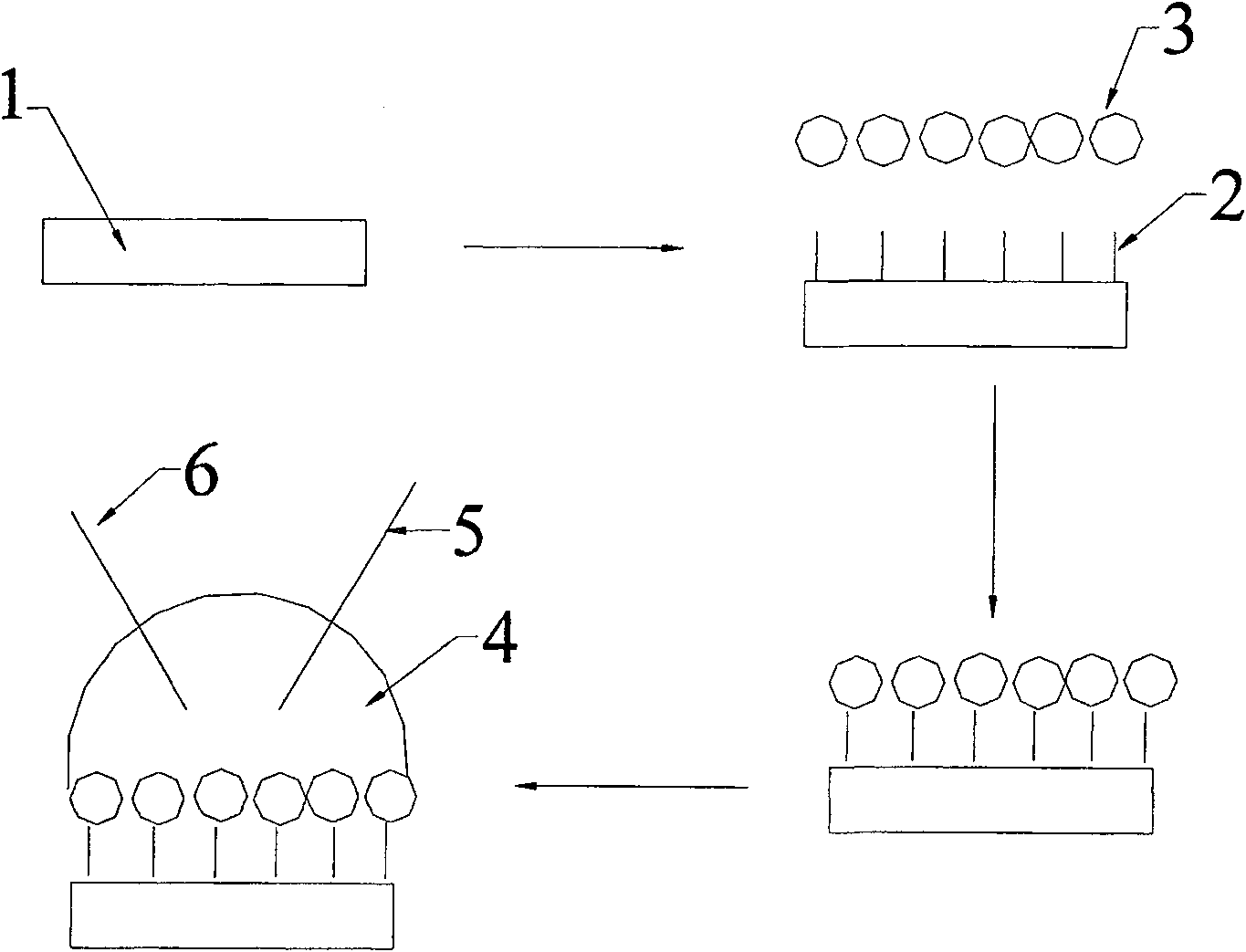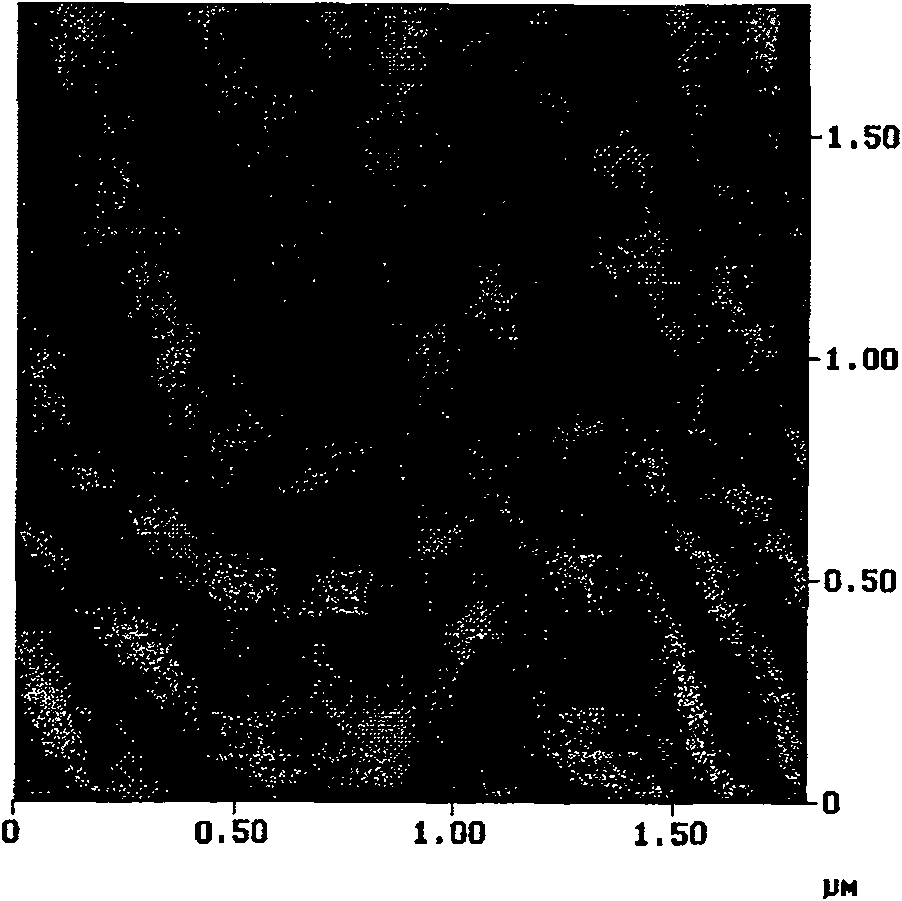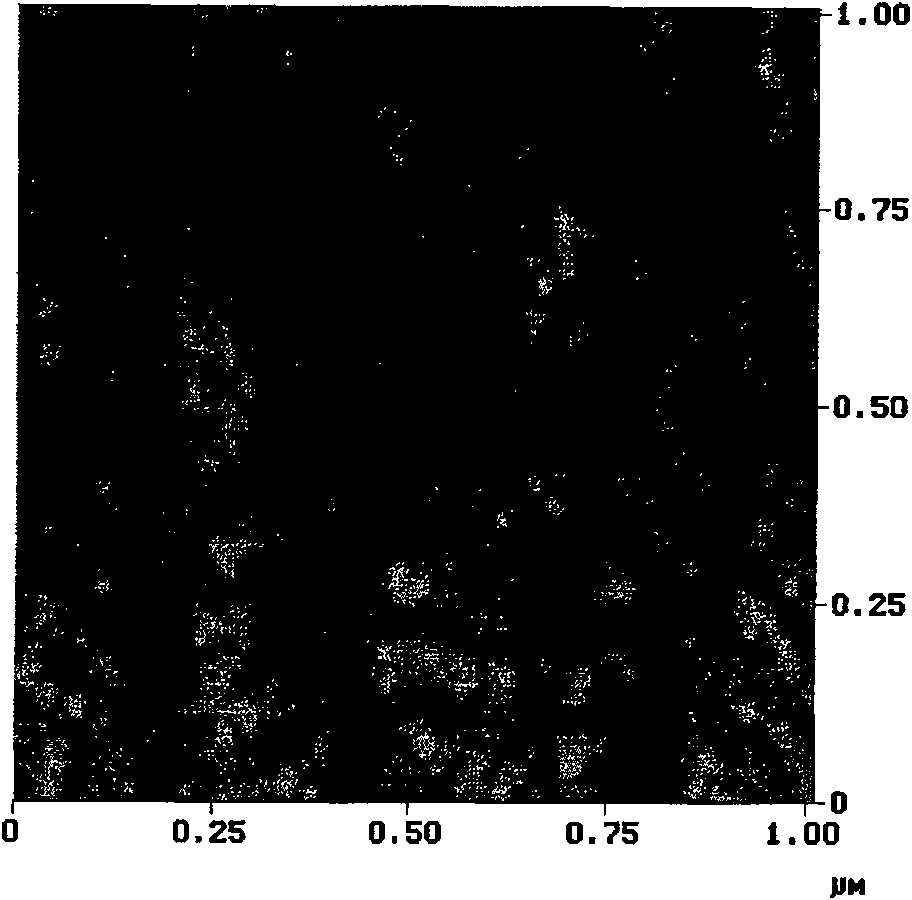Preparation method of nano biosensor for differentiating different sensitive and drug-resistant cancer cell
A technology for biosensors and cancer cells, applied in the field of biosensors, can solve the problems of speeding up the screening and research of tumor markers, cumbersome and complicated operation process, limited chip capture capability, etc., and achieves the effects of easy operation, high sensitivity and stable properties.
- Summary
- Abstract
- Description
- Claims
- Application Information
AI Technical Summary
Problems solved by technology
Method used
Image
Examples
Embodiment 1
[0022] A method for preparing a nano-biosensor for differentiating sensitive and drug-resistant cancer cells, comprising the following steps:
[0023] The first step is to generate hydroxyl groups on the surface of the electrode: first, the glassy carbon electrode is polished to a mirror surface on the suede with 0.05 μm aluminum powder, cleaned in acetone, absolute ethanol, and ultrapure water, and dried, and then placed in a pH In the 5.0 phosphate buffer solution (PBS), the voltage was set at 1.70V, and the electrochemical multi-potential step method was used for 280s. After the treatment, the cyclic voltammetry was scanned continuously for 20 circles in the positive potential range of 0.3V-1.25V. Then continuously scan 20 laps by cyclic voltammetry within the negative potential range of -1.3V~0.3V, take it out after scanning, rinse with distilled water, and dry; the second step, nanoparticle modification: the aqueous solution of functionalized gold nanoparticles Mix with 0...
Embodiment 2
[0025] A method for preparing a nano-biosensor for differentiating sensitive and drug-resistant cancer cells, comprising the following steps:
[0026] The first step is to generate hydroxyl groups on the surface of the electrode: first, the glassy carbon electrode is polished to a mirror surface on the suede with 0.05 μm aluminum powder, cleaned in acetone, absolute ethanol, and ultrapure water, and dried, and then placed in a pH In the 5.0 phosphate buffer solution (PBS), the voltage was set at 1.80V, and the electrochemical multi-potential step method was used for 320s. After the treatment, the cyclic voltammetry was scanned continuously for 20 circles in the positive potential range of 0.3V-1.25V. Then cyclic voltammetry scans continuously for 20 laps in the negative potential range of -1.3V~0.3V. After scanning, take it out, rinse with distilled water, and dry it; the second step, nanoparticle modification: the aqueous solution of polylactic acid nanofibers is pressed Mix ...
Embodiment 3
[0028] A method for preparing a nano-biosensor for differentiating sensitive and drug-resistant cancer cells, comprising the following steps:
[0029] The first step is to generate hydroxyl groups on the surface of the electrode: first, the gold electrode is polished to a mirror surface on the suede with 0.05 μm aluminum powder, washed in acetone, absolute ethanol, and ultrapure water, dried, and then placed in a pH 5.0 In the phosphate buffer solution (PBS), the voltage is set at 1.70V, and the electrochemical multi-potential step method is used for 280s. After the treatment, the cyclic voltammetry scans continuously for 20 circles in the positive potential range of 0.3V-1.25V, and then Continuously scan 20 laps by cyclic voltammetry within the negative potential range of -1.3V to 0.3V, take it out after scanning, rinse with distilled water, and blow dry;
[0030] The second step, nanoparticle modification: mix the aqueous solution of polylactic acid nanofibers in a volume ra...
PUM
 Login to View More
Login to View More Abstract
Description
Claims
Application Information
 Login to View More
Login to View More - R&D
- Intellectual Property
- Life Sciences
- Materials
- Tech Scout
- Unparalleled Data Quality
- Higher Quality Content
- 60% Fewer Hallucinations
Browse by: Latest US Patents, China's latest patents, Technical Efficacy Thesaurus, Application Domain, Technology Topic, Popular Technical Reports.
© 2025 PatSnap. All rights reserved.Legal|Privacy policy|Modern Slavery Act Transparency Statement|Sitemap|About US| Contact US: help@patsnap.com



